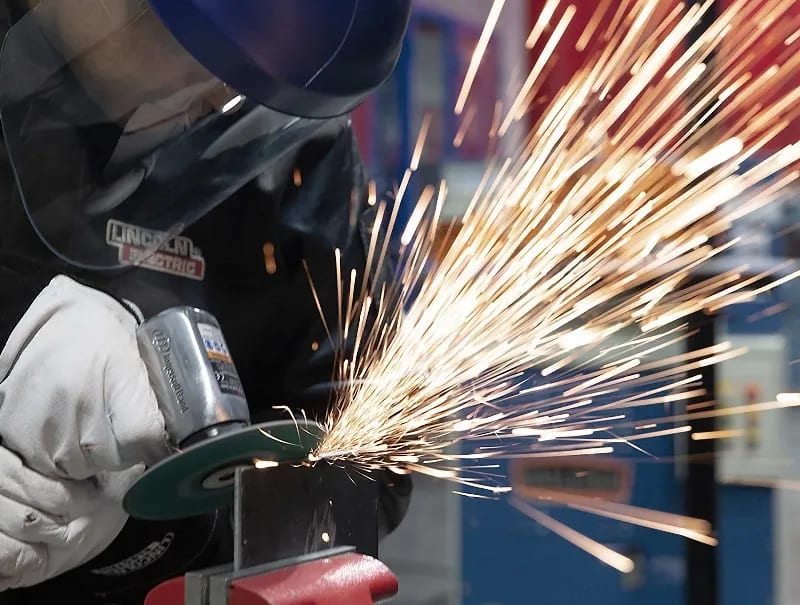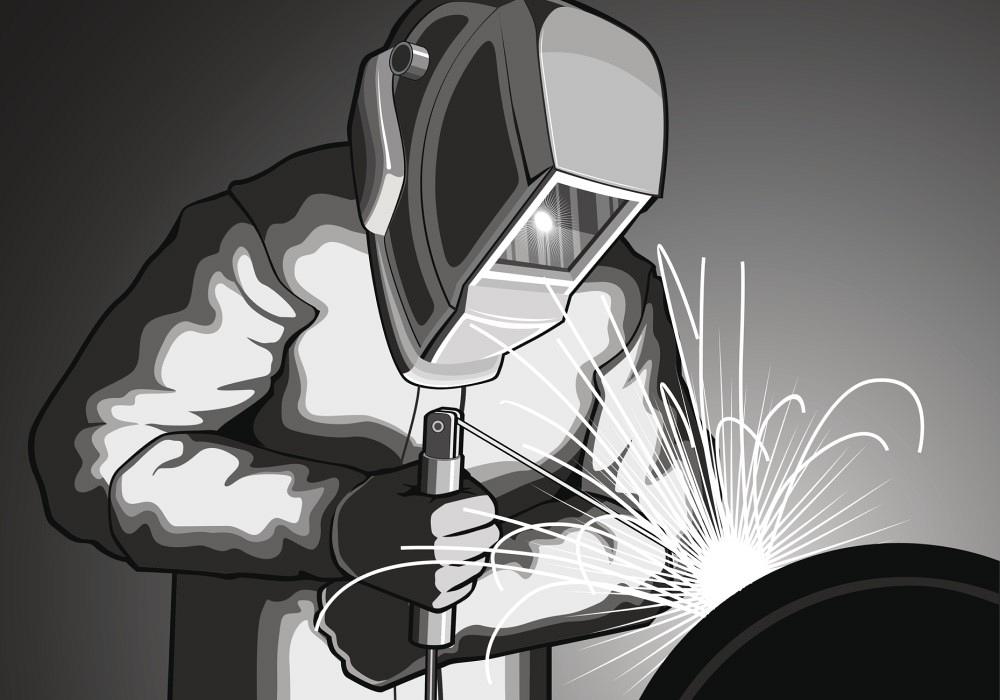Usual Welding Repair Issues and Just How to Address Them Efficiently
Welding repairs usually come across a variety of concerns that can jeopardize the honesty of the last product. Usual issues consist of poor infiltration, porosity, and imbalance, to name a few. Each defect offers one-of-a-kind challenges that need details techniques for resolution. Comprehending these concerns is vital for welders aiming to improve their abilities and end results. This discussion will explore these common welding repair work issues and effective techniques to address them.
Inadequate Penetration
Insufficient penetration takes place when the weld steel fails to totally fuse with the base product, leading to weak joints and potential architectural failings. This problem commonly stems from inadequate warmth input, wrong electrode angle, or improper welding rate. Welders might encounter poor infiltration because of a miscalculation of the needed specifications for a specific material density or kind. Furthermore, contamination on the base product's surface area can hinder reliable bonding, aggravating the trouble. To resolve insufficient penetration, welders need to guarantee ideal settings on their tools and keep a tidy job surface area. Regular evaluation of welds is advised to determine any kind of shortages early, permitting timely improvements and the prevention of compromised architectural honesty in bonded assemblies.
Porosity
Porosity is an usual defect in welded joints that materializes as tiny gas bubbles caught within the weld steel. This defect can jeopardize the stability of the weld, leading to lowered stamina and possible failure under stress. Montana Mobile Welding and Repair. Porosity generally emerges from contamination, moisture, or incorrect welding methods, which enable gases to leave into the molten weld swimming pool. To deal with porosity, welders must ensure proper surface area prep work, keep a tidy working setting, and make use of suitable welding criteria. Additionally, choosing the appropriate filler material and securing gas can reduce gas entrapment. Routine assessment and screening of welds can assist determine porosity early, assuring timely restorative actions are taken, thus protecting the quality and dependability of the welded structure
Imbalance
Misalignment in welding can emerge from different aspects, including improper setup and thermal expansion. Understanding the source is important for effective resolution. Several adjustment techniques are readily available to realign components and guarantee structural honesty.
Sources of Misalignment
Welding misalignment commonly comes from a selection of underlying concerns that can compromise architectural integrity. One primary reason is improper fit-up of components prior to welding, which can bring about spaces and uneven surfaces. Variants in thermal expansion during the welding procedure can also cause distortion, specifically if the materials being signed up with have various coefficients of expansion. Furthermore, poor securing and fixturing may stop working to hold components firmly in area, bring about movement throughout welding. Inadequately maintained devices, consisting of welding makers and devices, may introduce inconsistencies in the weld grain, additional adding to misalignment. Operator mistake, stemming from not enough training or experience, can also play a considerable duty in creating misaligned welds.

Correction Techniques Offered
Addressing imbalance effectively requires a combination of corrective techniques tailored to the specific concerns handy. One common approach is making use of jigs or components to hold parts in the appropriate placement during welding, guaranteeing consistent alignment. Furthermore, preheating the materials can help in reducing distortion and improve fit-up. For considerable misalignment, mechanical adjustment strategies, such as making use of hydraulic jacks or clamps, can be used to fix the placement before welding. Post-weld warmth treatment might likewise be necessary to eliminate stress and anxieties triggered by misalignment. Cautious examination and change throughout the configuration phase can prevent imbalance problems from ending up being significant issues, advertising a smoother welding procedure and boosting overall architectural integrity.
Distortion
Distortion is a typical challenge in welding that can occur from various aspects, consisting of unequal home heating and air conditioning. Recognizing the reasons of distortion is necessary for applying efficient prevention strategies. Resolving this problem not just improves architectural honesty however additionally enhances the general quality of the weld.
Sources of Distortion
When subjected to the intense warmth of welding, materials typically undergo adjustments that can result in distortion. This phenomenon mostly occurs from thermal development and tightening during the welding process. As the weld location warms up, the material broadens; upon air conditioning, it gets, which can develop internal stress and anxieties. Furthermore, irregular heating across a work surface can aggravate these tensions, resulting in warping or bending. The kind of product additionally plays a considerable function; metals with differing thermal conductivity and coefficients of development might react in different ways, causing unforeseeable distortions. Additionally, poor joint layout and inadequate fixturing can add to misalignment throughout welding, raising the probability of distortion. Recognizing these causes is crucial for effective welding fixing and avoidance techniques.
Avoidance Techniques
Efficient prevention strategies for distortion during welding focus on controlling warm input and ensuring correct joint style. Keeping a constant warm input aids to reduce thermal expansion and contraction, which can cause distortion. Utilizing techniques such as preheating the workpiece can also lower the temperature level gradient, advertising uniform home heating. Furthermore, choosing ideal Bonuses joint designs, such as T-joints or lap joints, can improve security and lower stress and anxiety focus. Carrying out proper fixturing to secure the work surfaces in place better help in maintaining positioning throughout the welding process. Ultimately, staggered welding series can distribute heat extra equally, stopping local distortion. By using these approaches, welders can greatly reduce the possibility of distortion and enhance the general top quality of their welds.
Cracking
Fracturing is a common problem run into in welding fixings, typically arising from numerous factors such as inappropriate air conditioning rates, product selection, or insufficient joint preparation. The incident of fractures can considerably compromise the honesty of the weld, bring about prospective failures during procedure. To resolve this concern, welders must first analyze the origin, making sure that materials are compatible and suitably picked for the particular application. Additionally, controlling the cooling price during the welding process is necessary; fast air conditioning can generate stress and result in cracking. Correct joint style and preparation likewise contribute to lessening the threat. Implementing these methods can improve weld high quality and durability, inevitably lowering the likelihood of fracturing in ended up weldments.

Insufficient Fusion
A substantial issue in welding repairs is incomplete combination, which occurs when the weld metal does not properly bond with the base product or previous weld passes - Montana Mobile Welding and Repair Welding. This flaw can lead to weaknesses in the joint, possibly compromising the stability of the bonded structure. Aspects adding to incomplete combination consist of insufficient warm input, incorrect welding method, and contamination of the surfaces being signed up with. To resolve this concern properly, welders should guarantee correct pre-weld cleansing and surface preparation, in addition to change their welding parameters to achieve ample infiltration and combination. Normal inspection during the welding procedure can additionally aid recognize incomplete fusion early, permitting for prompt rehabilitative steps to enhance the general high quality of the weld
Overheating
While welding fixings can improve structural integrity, overheating presents a considerable obstacle that can bring about material deterioration. Excessive warmth during welding can modify the mechanical residential or commercial properties of metals, leading to lowered strength, boosted brittleness, and bending. This sensation is specifically crucial in high-stress applications where structural integrity is critical. Recognizing getting too hot can involve aesthetic assessments for staining or distortion, in addition to monitoring temperature level throughout the welding procedure. To alleviate the dangers related to overheating, welders need to utilize suitable techniques, such as managing heat input, adjusting traveling rate, and using appropriate filler materials. Additionally, applying pre- and post-weld warm therapies can help bring back material residential or commercial properties and enhance the overall high quality of the repair work, making sure long-lasting efficiency and click here to find out more safety and security.
Regularly Asked Inquiries
What Are the Usual Signs of a Welding Problem?

How Can I Examine My Welds for Top quality?
To check welds for top quality, one can use visual assessments, ultrasonic testing, and radiographic methods. Each method guarantees structural honesty, recognizes defects, and validates adherence to specified criteria, inevitably enhancing the reliability of the welded joints.
What Safety Precautions Should I Take While Welding?
When welding, one should focus on safety by putting on appropriate personal safety tools, making certain correct ventilation, protecting flammable products away, maintaining a tidy work space, and understanding surroundings to stop accidents and injuries.
Can I Fix a Weld Without Redoing the Entire Joint?
Repairing a weld without renovating the entire joint is possible, depending upon the damages (Montana Mobile Welding and Repair Belgrade Fabrication). Strategies such as grinding, including filler product, or utilizing a welding process can efficiently deal with details imperfections while protecting the bordering structure
What Equipment Are Vital for Efficient Welding Repair Works?
Necessary devices for effective welding fixings include a welding equipment, cable brush, grinder, safety gear, clamps, and filler products. Each tool plays a crucial role in ensuring high quality and safety throughout the repair procedure. Porosity normally occurs from contamination, moisture, or incorrect welding strategies, which allow gases to get away into the liquified weld pool. Badly kept tools, consisting of welding makers and tools, might introduce variances in the weld bead, further adding to misalignment. When subjected to the extreme heat of welding, materials typically undertake changes that can lead to distortion. Fracturing is a common problem encountered in welding repair work, commonly resulting from various elements such as incorrect air conditioning rates, material option, or inadequate joint prep work. A significant problem in welding fixings is incomplete blend, which takes place when the weld metal does not sufficiently bond with the base product or previous weld passes.